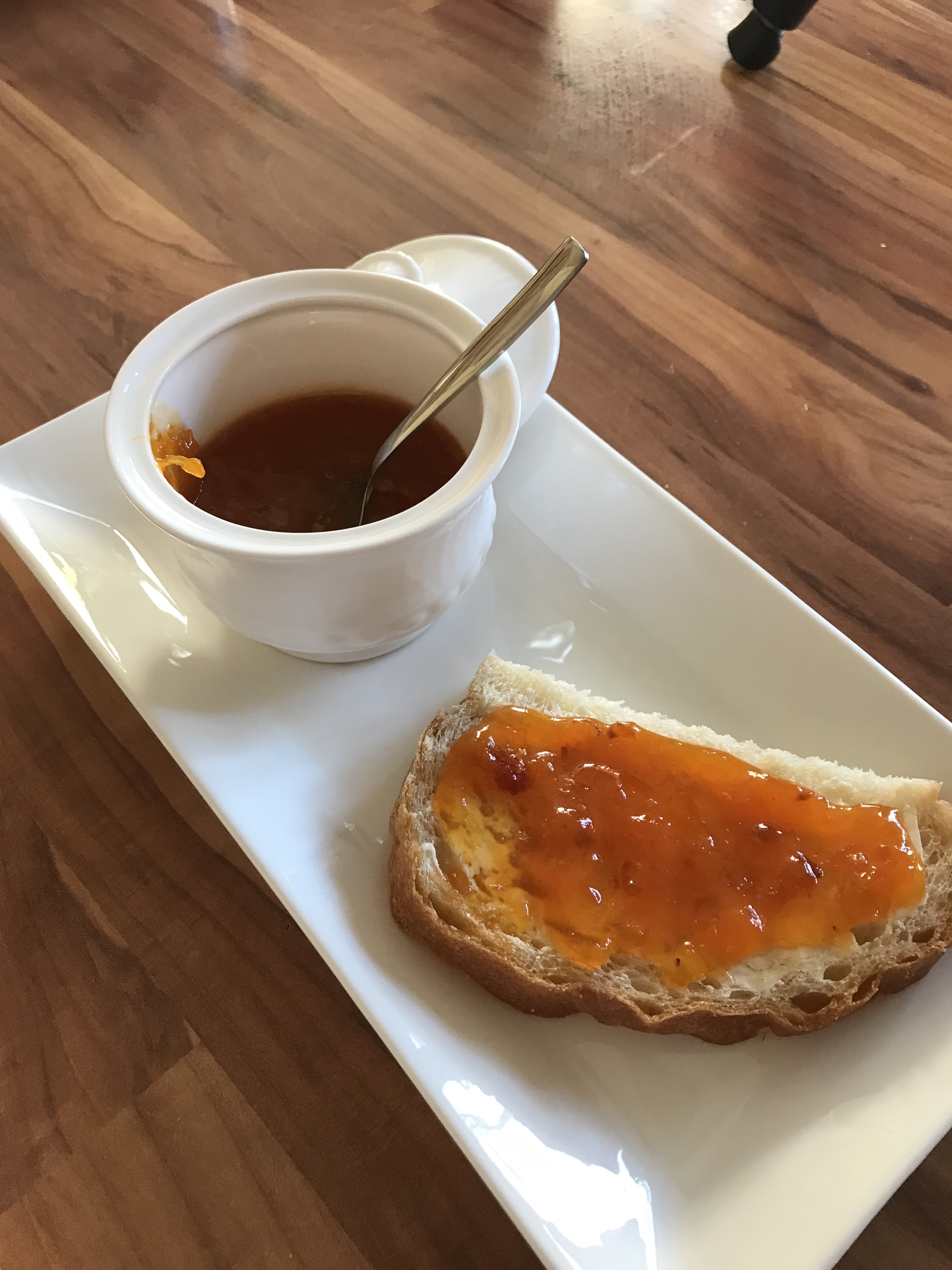Apricot Jam
I used to grow apricots but living in the north of England the climate is not perfect for them. The fruits were often bruised and battered by the weather and windfalls were many. They were however perfect for jam. I use this recipe too for plums, damsons and greengages. Stoning can be difficult especially if the fruits are small so after weighing the fruits I count them into the pan and then count out of the pan the same number of stones once the juices start to run, the fruits soften but before the mixture gets hot.
Preparation
Start the night before. If your casserole or preserving pan isn’t non stick then use the knob of butter to rub over the base. This will prevent the jam sticking and burning when boiling. The butter also prevents a scum forming on your jam when cooking.
Stone the fruits and place them into the large pan, sprinkling over the sugar and pectin (or lemon juice) as you go along.
Cover the pan with a cloth then transfer to a cool place (not the fridge) and leave overnight.
The next day uncover the pan and place it over a low heat on the hob. Place a couple of tea plates in the freezer.
Stir the pan of fruits from time to time and once the mixture has lost its grittiness, the sugar has dissolved and the fruits are swimming around in sugar syrup then turn up the heat. If you are making a jam from small plums, damsons or greengages I remove the stones by hand or using a spoon as they float to the surface. Do this before the mixture gets hot. Once all stones have been removed and the sugar has dissolved, bring the mixture to a fast boil then pop on your timer and boil for 15 minutes, stirring occasionally.
Whilst the jam is bubbling away sterilise your jars. Wash them in warm soapy water, rinse but do not dry them. Transfer onto a rack upside down and into a cold oven. Heat the oven then to 100 degrees c allowing the jars and the oven to come up to temperature. Keep the oven on for 10 minutes then turn it off but leave the jars inside until your jam is ready. Jar lids can be sterilised by covering them in cold water in a small saucepan, bring them to the boil and boil for 2-3 minutes. Pour off the water and allow to cool down.
After the jam has boiled for 15 minutes it will have reduced and be quite thick.
Turn off the heat and take one of the plates from the freezer. Place about 1 tbsp of the very hot jam onto the very cold plate and pop it into the fridge for a minute or two.
Take from the fridge and push your index finger through the jam. If it wrinkles and is gloopy and your finger leaves a trail then your jam is done and will set when cold. If, however your jam is still runny, the trail from your finger fills in then boil for a further 5 minutes and repeat again.
Fill the warm sterilised jars, screw on the tops whilst the jam is still hot then label when cold.
This jam will keep for at least a year.
TIP: Reduced Sugar Jam – I have made this jam using less sugar. Make with 850g sugar instead of 1kg will yield a fruity jam though will not preserve as well. It will keep 1 month on the shelf or freeze in jars and thaw overnight in the fridge when needed.
< Back to Recipes










